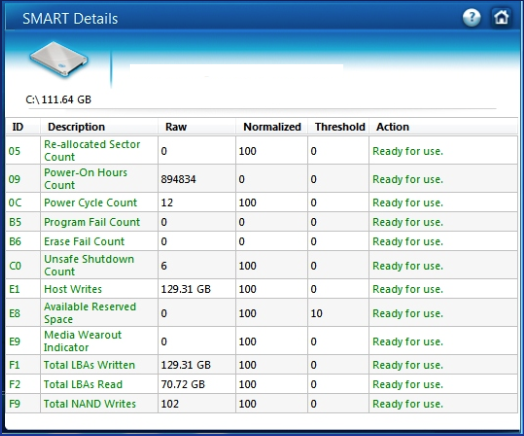CAN YOU SEE INSIDE YOUR SSD?
SCOTT PHILLIPS – DIRECTOR OF PRODUCT MARKETING, VIRTIUM
It can be considered hard to look inside at the health of the SSD as standard SMART data is limited and often cryptic.
Understandably, application workload affects SSD usage acceleration, which in turn impacts SSD available life/ In addition to that, we know that temperatures can affect reliability, endurance and data retention.
NAND architecture requires careful management, and the NAND structures require even more careful management. Smaller unaligned data causes increase in SSD usage acceleration, which in turn increases latency and wears the SSD more rapidly.
What is required is that data needs to be placed in larger files that are aligned on 4/8/16K page boundaries. Also to increase reliability, in-flight data as well as firmware metadata needs to be protected during a power loss.
What will the future hold? There needs to be an emphasis on firmware development and flash management, new software tools to monitor and manage SSD, and the flexibility to adapt SSD to application workloads and environmental conditions.
THE EVOLUTION OF SSD FORM FACTOR IN CONSUMER APPLICATIONS
THOMAS HSIAO – SENIOR FIELD APPLICATIONS ENGINEERING MANAGER, PHISON ELECTRONICS
Below is the SSD form factor trend currently being seen in the consumer market:
| Market | Form Factor |
| Enthusiast Tower Market | AIC, 2.5″ and M.2 |
| Mainstream Desktop and All-In-One | 2.5″ and M.2 |
| Convertible Notebooks/Ultramobile | M.2 and BGA |
| High End Notebooks | M.2 |
We are seeing a rise in NAND mono density, especially with the latest introduction of 3D NAND.
As portability, responsiveness, reliability and cost remain huge players in the flash market, we will see that M.2 and BGA form factors will become more prevalent. We know that the M.2 form factor is the current generation of cost effective SSDs and that it enables expanded capacity options, but once 256Gb mono mature and become mainstream, BGA SSDs will replace module and SSD’s will become embedded.
NVMe – WHERE WE ARE, WHERE WE CAME FROM, WHERE WE’RE GOING
DON H WALKER
Original NVMHCI consortium was created in 2007, and the first version of NVMHCI 1.0 was introduced in April of 2008. In March 2011, the first version of NVMe 1.0, version 1.2 was introduced in November of 2014.
NVMe drivers are becoming native, with rivers available on Windows, Linux, Solaris, VMware ad UEFI.
NVMe products are accelerating in 2015 and 2016, as NVMe continues to adapt. We can expect to see a management interface coming in Q3, as well as specification for NVMe over Fabrics in Q4.
 The SSD Review The Worlds Dedicated SSD Education and Review Resource |
The SSD Review The Worlds Dedicated SSD Education and Review Resource | 

